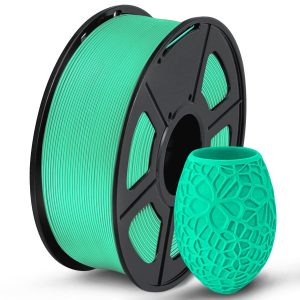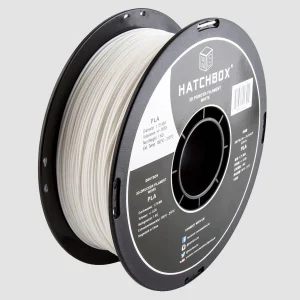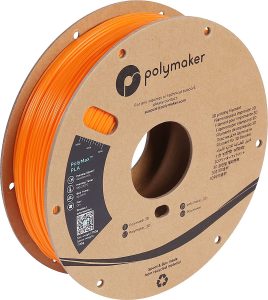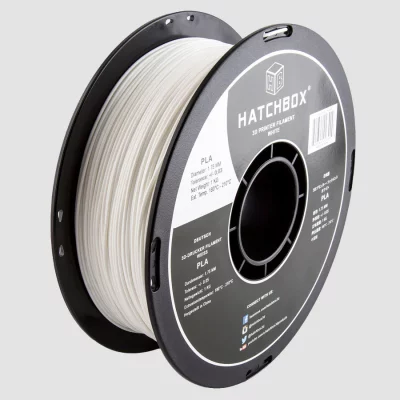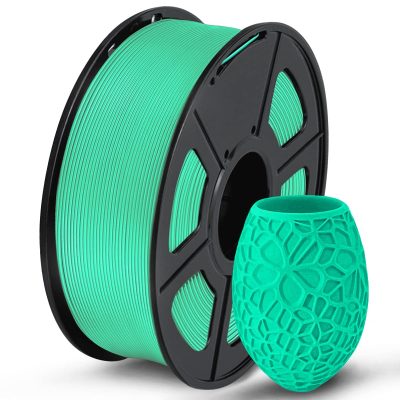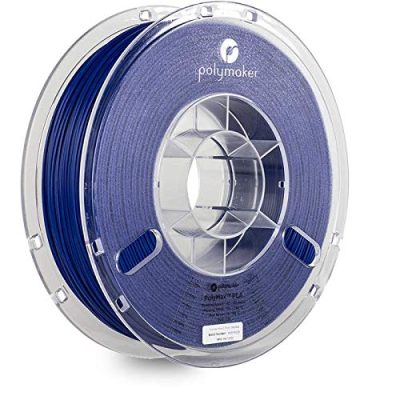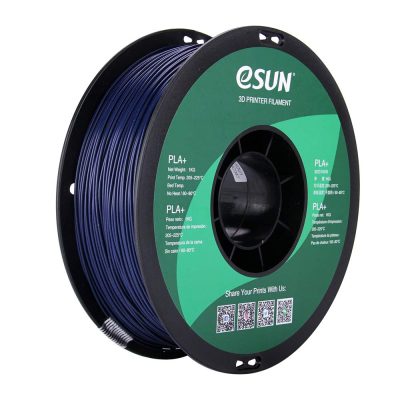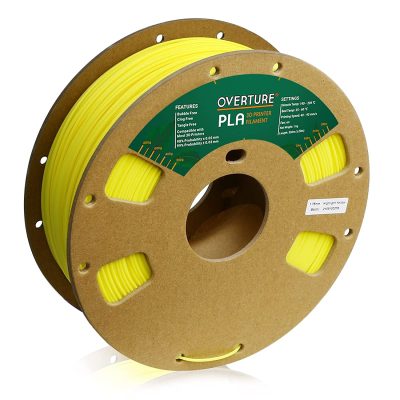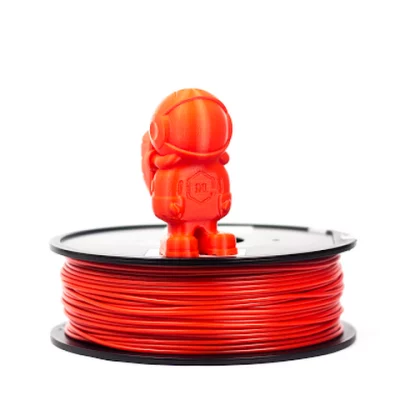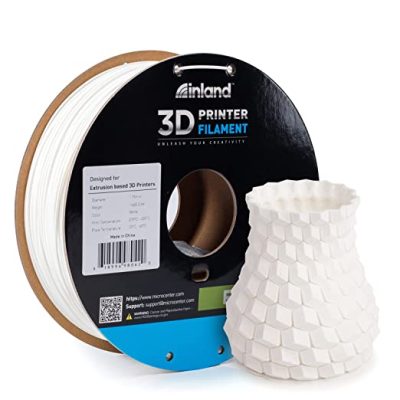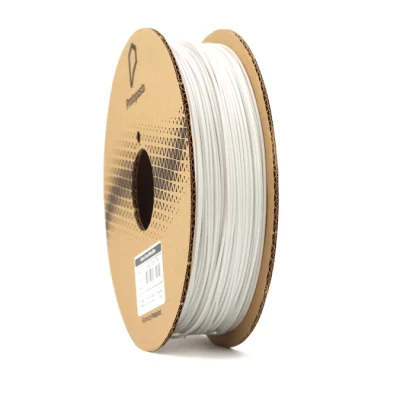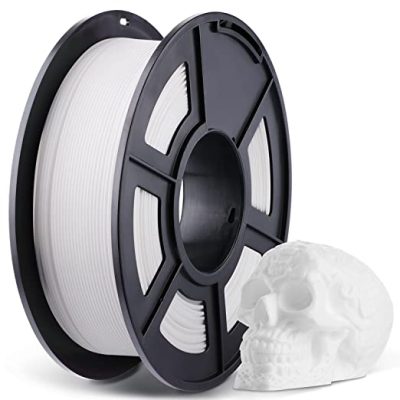- Last Updated: January 12, 2024
-
 Pat Nathaniel
Pat Nathaniel
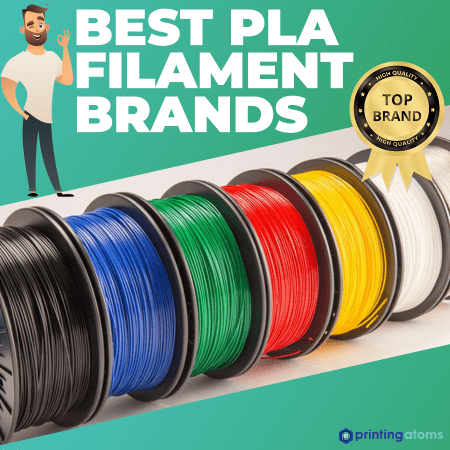 Looking for the best PLA filament brands?
Looking for the best PLA filament brands?
There are thousands of companies selling PLA. But not all of them are worth buying from.
The problem is that many of these companies sell PLA of atrocious quality.
If you are shopping for filament, you must find the highest quality ones. If you don’t, you can end up with low-quality adulterated PLAs – that at best create shoddy prints, and at worst will destroy your nozzle.
Getting the best PLA filament quality-wise can be the difference between buying an Apple iPhone vs buying an Apple iPone.
It can be the difference between your business thriving (due to quality prints) vs your business failing (because people hate your prints).
And it can be the difference between strong long-lasting prints vs prints that fall apart with ease.
Table of Contents
- Best PLA Filaments At A Glance
- What is PLA Filament?
- Why Choose a PLA Filament?
- How Do I Choose a PLA Filament?
- What is the Best Printing Temperature for PLA?
- How to Post Process PLA 3D Prints?
- What is the Strongest PLA filament?
- Why is PLA Not Sticking to the Bed?
- Is PLA Food Safe?
- Is PLA Toxic?
- Is PLA Biodegradable?
- Is PLA Safe for Fish?
- Is PLA Waterproof?
- PLA Vs. ABS
- PLA Vs. PETG
- So Which PLA Filament is the Best?
Best PLA Filaments At A Glance
So we hope by now you get how important this is.
To help you out, we have reviewed the best PLA filaments in the market. We tested them for quality, strength, aesthetics, and many other parameters. Scroll below to know which PLA filament brands are the best.
1. Hatchbox (Best Choice)
2. Sunlu (Best Value)
3. Polymaker Polymax (Premium Choice)
4. eSun PLA PRO (PLA+)
5. Overture
6. MatterHacker’s Build Series
7. Inland
8. Protopasta
9. Anycubic PLA
The Hatchbox PLA, which is a vibrant-looking PLA filament, is such a thief. It has stolen the heart of 1000s of satisfied Amazon customers. And ours as well.
This is easily the 3D printing filament we recommend the most, for various reasons. It is the best overall PLA filament on this list.
Firstly, prints made from this filament are flexible and strong. We didn’t observe stringing in our test models. And the finishes turned out glossy.
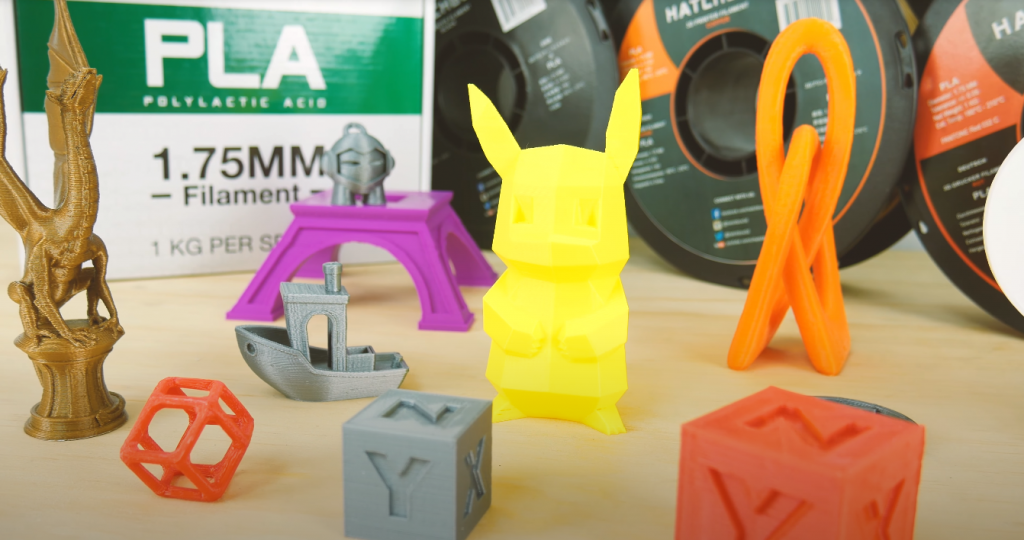
We found the layer adhesion to be really good, and we observed no warping during the printing process. Prints stick to the bed with ease.
Now coming to the smell. Boy, these PLA filaments smell amazing. Reminded us of pancakes. Make sure you aren’t hungry when using this filament.
The PLA filament works great at nozzle temperatures of 180°C-220°C.
The Hatchbox PLA family is a colorful bunch. The filaments come in 28 different colors including yellow, blue, white, and black. While we love the brand, we hate Hatchbox’s support. It is poor and is hard to get in contact with the support staff.
With that said, we wholeheartedly recommend the Hatchbox brand. It is a great PLA filament for such an affordable price.
Pros
- Creates prints that are uniform and vibrant-looking
- Prints stick to bed easily without warping
- Smells amazing
- Affordable
- Huge color variety
Cons
- Lack of support from Hatchback
Which company packs their filament in the best possible way? The non-existent PLA filament award for Best Packing goes toooo… Sunlu PLA!
We just loved how the filament was packaged. It is so neatly wound and is 100% tangle-free. This means that you can do something else – watch TV, cook food, go bungee jumping. You don’t have to worry about prints failing midway because of tangles.
The prints we printed with this 3D printing filament are great to touch and have a smooth, shiny surface. The layers are compact and they disappear into each other in a seamless manner and are nearly undetectable to the naked eye. Print quality is exceptionally accurate and is perfect for printing mechanical parts like gears.
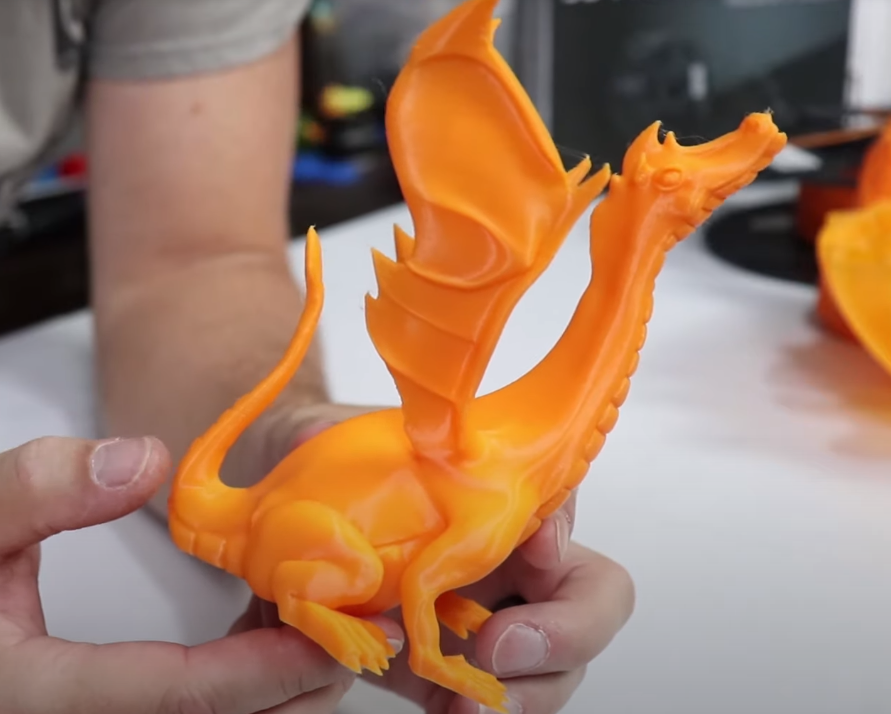
The PLA filament also flows smoothly from the extruder- there is little chance that the nozzle can be clogged up.
If you want optimum print quality, remember to keep the nozzle temperature above 220°C during 3D printing. Be careful though, the high temperature gives off a lot of fumes. Luckily you don’t have to stay in the room while the printer prints, eh?
Sunlu is a highly sought-after PLA filament brand used by pros and beginners alike. This is a no-nonsense 3D printing filament that just gets the job done and is the most affordable PLA filament.
Pros
- Best Packaging
- Smooth, shiny print surface
- Solid adhesion
Cons
- Excessive fumes due to high nozzle temperature
The toughest kid on the PLA block is the Polymaker’s Polymax PLA 3D printer filament. Smack it, hit it, do whatever. But be careful, this meanie isn’t scared of you.
The Polymax PLA is tough. The prints turn out very sturdy. We ran multiple impact tests on the final prints. They survived like champs. It has high impact resistance, almost 7-9 times that of standard PLA in the market. The Polymax is also 20% tougher than ABS.
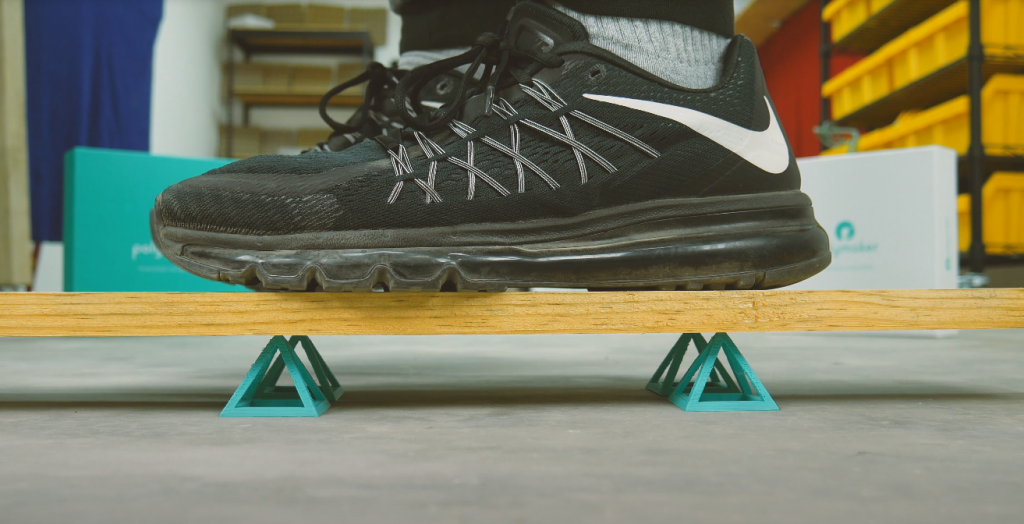
The PLA filament sticks to the bed platform with ease. We also didn’t find warping on all our test pieces.
Prints made by the Polymax PLA look fantastic. They look pleasing to the eye. The individual layers aren’t visible and the models look like they are made through injection molding. The prints look whole and completely fused. On top of all that, the surface looks and feels smooth to touch.
The final prints come without strings attached, literally. Because of this, the prints look very clean.
Polymaker’s Polymax PLA filament is a must-have, especially if strength is something you’re looking for in your prints.
Pros
- Toughest PLA in the list
- Smooth surface
- Part looks completely fused with no visible layers
- No warping
Cons
- Expensive
Fresh new prints eSUNny side up! The eSUN PLA PRO (PLA+), formulated from corn grain (this is not suitable for chickens), is a highly-rigid and super glossy PLA filament.
Its formula makes it 10x stronger than regular PLA, with excellent mechanical properties that make it near-immune to cracking and damage.
With the eSUN’s superior layer bonding and adhesion, you get perfect prints every time with a smooth and shiny finish. If you want nice-looking prints and an easy printing process, the eSUN PLA PRO (PLA+) is the one for you.
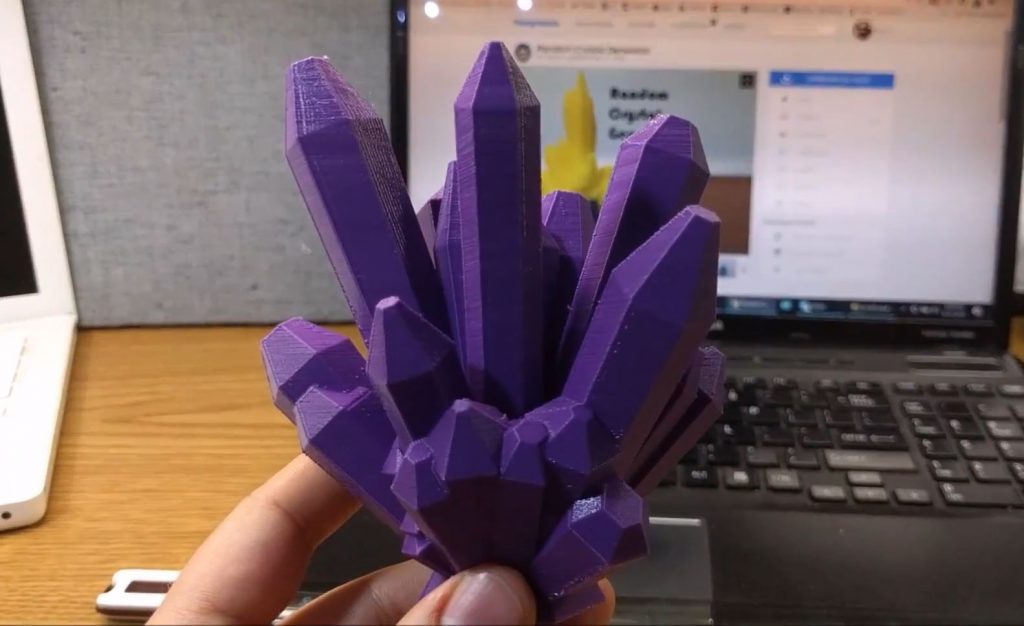
Be warned, however — this filament requires hot temperatures starting from 205-220°C. Make sure your hot end can reach 205°C at least before purchasing this filament. As a note of caution, ensure that your windows are open when you are 3D printing at high temperatures as the fumes are toxic.
Also, you’ll need a print bed temp of 60 to 80°C.
This filament comes in quite a few colors including olive green, dark blue, black, white, and grey.
Pros
- Beautiful finish
- Easy printing
Cons
- Requires high temperatures to print
Looking for a cheap and reliable filament? Well, this is the one to end your search!
The Overture PLA Filament is a 3D printing fan favorite — and for good reason.
With colors like Space Grey, Fresh Red, Sakura Pink, Black, and the yummy-sounding Chocolate, the range covers nearly the entire color wheel! If you want to print things in different colors at an affordable price, this is the perfect filament for you.
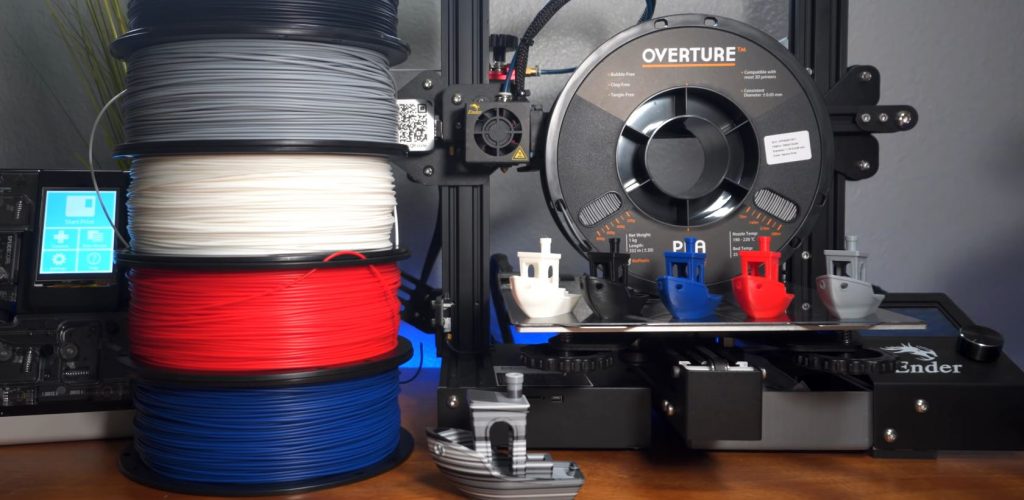
This filament also offers odor-free printing so your house doesn’t smell like a Barbie factory caught on fire… sorry Barbs!
Another advantage of the Overture filament is its smooth feeding — unlike a lot of filaments, it doesn’t snap or break at random times, which ruins your print. One note of caution, however — this filament can become brittle if stored improperly and not used for a long time.
Also, we found that this filament is prone to tangling in its default state — however, attaching a filament guide to your printer will effectively solve this issue.
A huge plus: There’s no bubbles or stringing with this filament as long as you set it to proper settings! Any filament can turn out badly when you set the bed or extruder temperature too high. This filament prints best at an extrusion temperature of 200-220°C and has great layer adhesion at a bed temp of 50-60°C.
It’s super accurately measured so you get exactly what it says on the tin — 1.75mm, no more, no less. This ensures that you’ll have fewer printing issues (like clogging or jamming) since the filament diameter corresponds exactly to what the printer expects. Nice!
Pros
- Very affordable
- Odor-free printing
- Large color variety
Cons
- Prone to tangling without a filament guide
Looking for a PLA filament that is cheap, but still has it all? Then you should check out MatterHacker’s Build PLA.
Our testing with the 3D printer filament produced great overall results. The prints turned out smooth with sharp details. The finish was glossy. The PLA supports came off easily, just like that. We weren’t too happy with the rather excessive stringing, however.
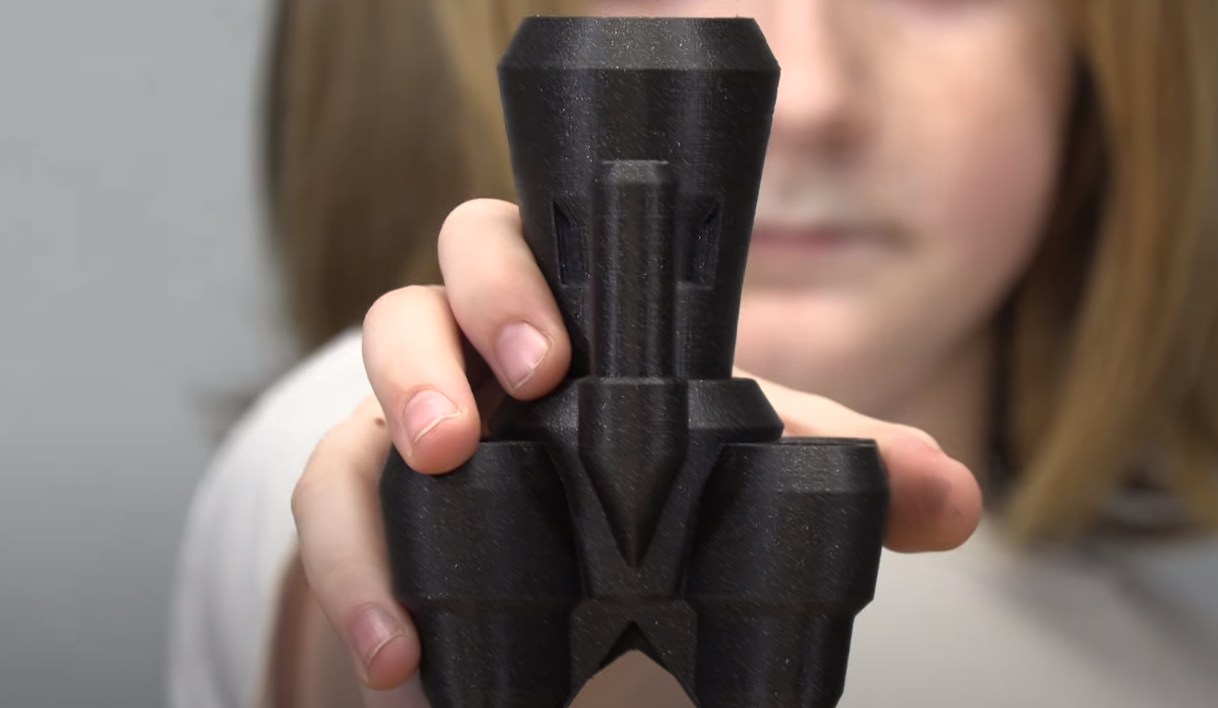
The layer adhesion is solid and the prints were strong and sturdy overall.
We found printing with the MatterHacker PLA filament a smooth and enjoyable process, with no issues whatsoever (except for the stringing). Highly recommend this affordable PLA.
Pros
- Glossy, sharp finish
- Supports come off easily
- Solid layer adhesion
Cons
- Excessive Stringing
If there was a standard that all other PLA filaments were compared against, the Inland brand would be a good option. This is a reliable mid-range filament that will satisfy most users.
Our tests showed that Inland is a joy to print with. It’s easy to work with and has a very consistent diameter, so it feeds smoothly into the printer and we experienced next to no clogging.
The print quality is good and the filament produces very nice details (especially considering its price). There’s little stringing and print plate adhesion is top notch.
The Inland filaments now come on cardboard spools. On one hand, we like the environmentally-friendly spools. On the other, the filament seems to tangle somewhat as the spools’ edges fray, so keep an eye out for that.
Oh, and you’d better hope your hot end gets hot. The recommended printing temperatures for Inland PLA are 215°C-230°C, but we steadily had to aim for the high end of that scale. If your hot end doesn’t blaze, don’t bother trying.
The Inland PLA is available in a decent range of colors, even glow-in-the-dark. Sadly, the colors aren’t exactly consistent between spools. We noticed some color variations on our test prints.
Lastly, this filament can be brittle. It didn’t break on us consistently but it can happen. Maybe there’s a snag somewhere in quality control?
Overall, though, Inland PLA made running our printers easy. If you want a reliable PLA filament, this is it.
Pros
- Good detail quality
- Consistent diameter
- Easy to print
- Great adhesion
Cons
- Needs high temperatures
- Can be brittle
- Inconsistent colors
Mamma mia, that’s a stiff-a filament! Protopasta’s PLA spaghetti (not in the print error sense) produces some of the strongest PLA prints we’ve seen.
The stiffness of this stuff is pretty phenomenal straight off the print bed. But here’s the real kicker — Protopasta PLA is suitable for heat treatment.
After that, it resulted probably in the strongest prints we tested here.
But Protopasta isn’t just tough — it’s also pretty. The filaments are available in a pretty ridiculous color range. We particularly liked the multicolor filaments that made for some really stunning prints.
We also managed to get great print quality with little stringing and warping. But boy, was the journey to reach that quality a pain.
Protopasta PLA is marketed as HTPLA — that is, High-Temperature PLA. This stuff is designed to be printed at temperatures up to 250°C.
As such, Protopasta is seriously finicky to print with. Be warned, you’ll probably have to go through a lot of failed test prints (unless you by some miracle happen to hit the sweet spot with your printer settings immediately).
That brings us to our second caveat. Protopasta PLA is only available on 500g spools that cost quite a bit. Your test prints can get expensive quickly.
But if you have the cash to burn and don’t mind experimenting, you can get strong and gorgeous prints with Protopasta.
Pros
- Very strong
- Suitable for heat treatment
- Amazing colors
- Good print quality
Cons
- Really difficult to print
- Needs very high temperatures
- Expensive
- Small spools
Anycubic is famous first and foremost for its resin 3D printers. But this PLA filament shows that the company isn’t a one-trick pony — they also know how to make a good filament.
Anycubic PLA is an excellent option for large prints that take a long time to complete. The filament is very sturdy and feeds smoothly into the extruder.
We didn’t have to worry about breakage or snapping even on prints that ran for a couple of days. There’s practically no stringing or layer detachment, so your large prints will come out great. We ran into only a couple of issues during our tests — and wouldn’t be surprised if those were due to user error.
Anycubic’s filament produces good detail quality and a nice slightly silky surface straight out of the printer. That said, this stuff is great for post-processing. Sanding our prints was easy and the filament takes paint well.
Finally, this filament is pretty reasonably priced. Is it the cheapest PLA out there? No. But the value is right, which just makes it that much better for big prints.
The filament is really sensitive to moisture, though. Make sure to store it right or it will absorb water from the air and your layer will come apart.
Also, you might occasionally get a spool where the filament is rolled too tightly. It’s not a common thing, but it might happen.
Anycubic really knows both resin and filament materials. This is hands-down the best PLA filament for big prints.
Pros
- Consistent filament diameter and quality
- High print quality and detail
- Little stringing or warping
- Work well with post-processing.
- Good value
Cons
- Can be wound too tightly
- Sucks up moisture
What is PLA Filament?
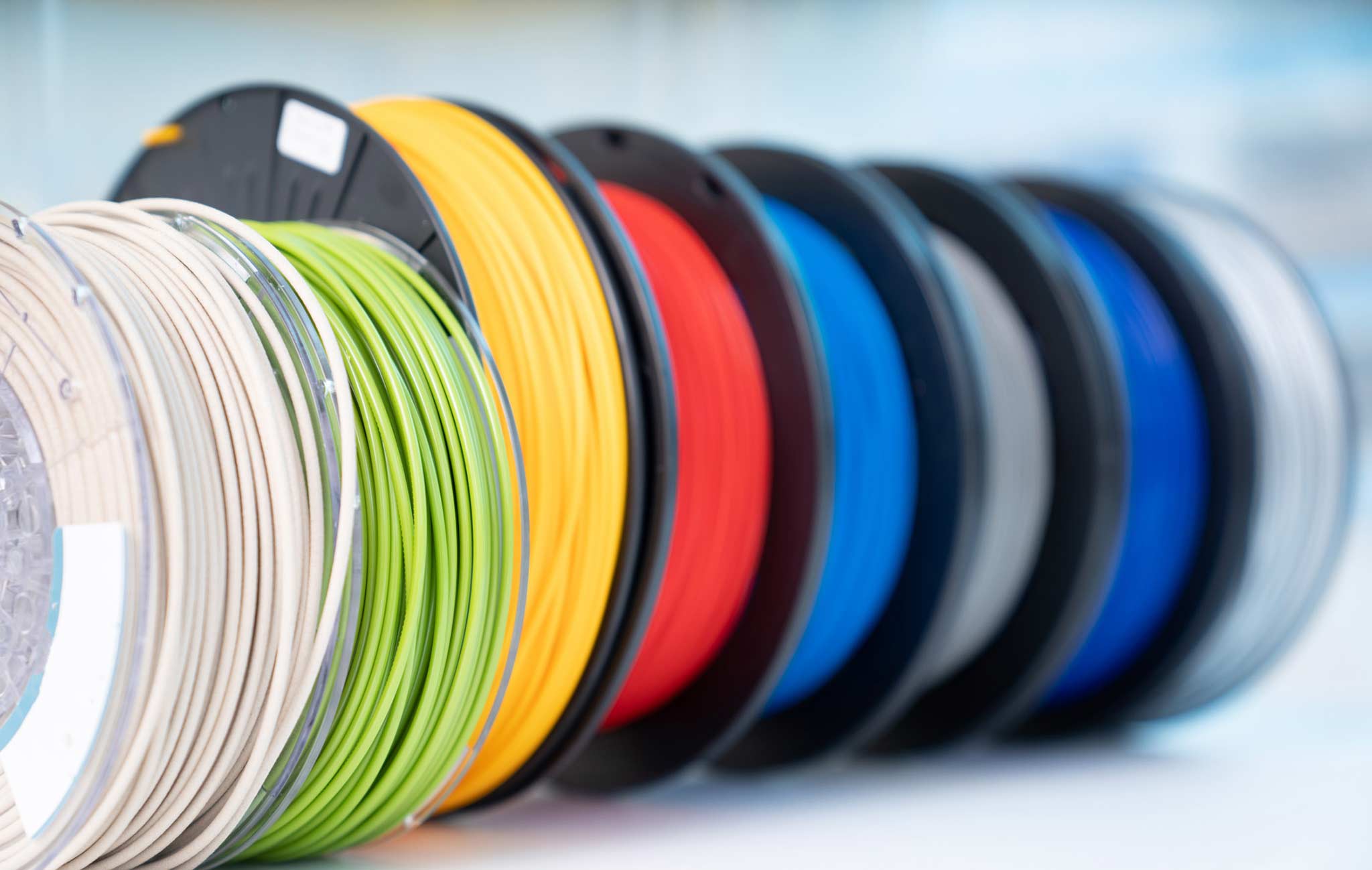
PLA — or polylactic acid — is a popular plastic material in 3D printing. It can be made of fossil oils, but it’s more often than not a bioplastic.
So if you’ve ever wanted to print with something derived from corn or sugarcane, PLA is your material.
PLA is a very common filament in FDM printing, especially among beginners. That’s all due to its low price, low(ish) temperature requirements, and decent print quality. You can also print PLA without a heated bed, so it works with basic consumer-level printers.
PLA isn’t just for newbies, though. Many commercial users and companies use it as a prototyping material, exactly because it’s so cheap and easy to handle.
Why Choose a PLA Filament?
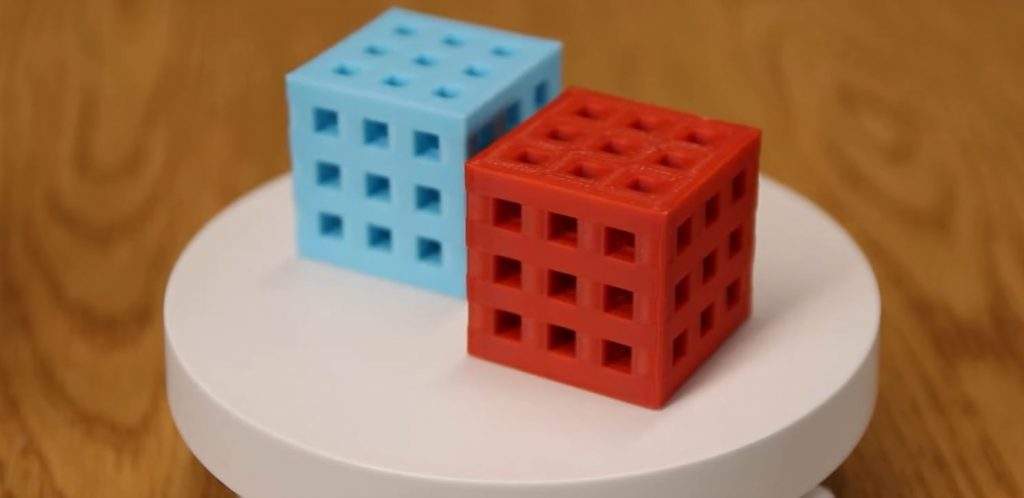
PLA filaments are the best both for beginners (especially) and experts alike. If you own a 3D printer, PLA filaments are better suited for most home printers compared to ABS. They print much more easily.
So why choose a PLA filament? We already mentioned some of these points, but repetition leads to mastery!
- They are strong and the prints last long (damn, I feel like a poet).
- The odors they emit aren’t overpowering. In fact, they are usually pleasant smelling. Hence they are perfect for a house setting. Your guests will thank you.
- You don’t need to have a printer with a heated bed for PLA to print. They work on cold surfaces as well
- They are extremely safe filaments. If you touch them or inhale them there is no safety issue.
- If caring about the environment is one of your values, you’ll be happy to hear that they are environmentally friendly and biodegradable. This is because they are made from cornstarch.
- PLA prints are aesthetically beautiful to look at. They are shiny and have smooth surfaces. Perfect for toys, cosplay, figurines, and anything artistic.
But is there any reason not to pick PLA? Sure. Here are the material’s most glaring flaws.
- PLA breaks pretty easily and it doesn’t stand up to heat. It’s not a great option for functional parts.
- It biodegrades a bit too well and PLA-printed parts tend to naturally disintegrate over time. These filaments aren’t the best for prints that need to last a long time.
- PLA absorbs moisture from the air, both before and after printing, so it needs careful storage and potentially drying before use.
How Do I Choose a PLA Filament?
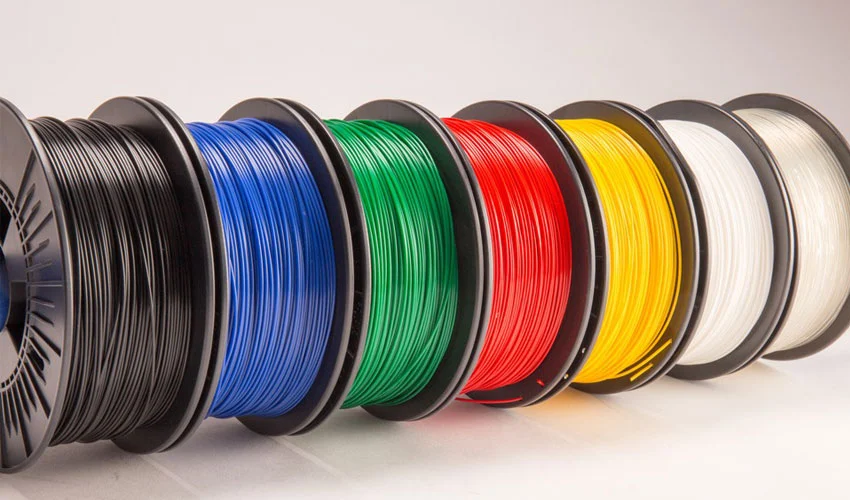
There are a few couple of things to look for if you are buying a PLA filament.
- Check for any impurities: As we mentioned before, there are tons of PLA brands popping up in the marketplace. Many of these are shady companies that create low-quality PLA filaments, but insidiously market them as pure-grade ones. These PLAs are mostly diluted with low-quality materials to make the product cheaper.
Having these impurities can block your expensive 3D printer’s nozzle, jamming them during operation. This is because these impurities don’t melt as easily as PLA does.
- Filament Diameter: The wrong PLA spools come with varying diameters, and this is problematic when printing prints. If the diameter is wider on one part of the spool and less wide on another, this will cause problems during the printing process. You will have to keep adjusting feed settings to counteract the issue. The varying diameters can also lead to inconsistency in the prints.
- Proper packing: Make sure that the filaments are wrapped in the spools in a neat manner. If this isn’t the case, the filaments may get tangled, causing problems while feeding them into the printer. Also, make sure that the filaments aren’t wound up too tightly as well as this may lead to breakage.
- Consistent Color: If you buy from shady filament manufacturers, you’ll often notice the variation in the color tone of the filament from one spool to another. So while printing, when changing the spool, you may notice the print resumes with a different shade of color.
As a hobbyist, this can seem unsightly. You wouldn’t want your works of art to look chromatically uneven, do you? And if you are a business owner, wouldn’t you to want to keep your prints consistent in their coloring if you want to maintain the standard of your business.
What is the Best Printing Temperature for PLA?
PLA is generally accepted to work from 180 to 230°C, but the optimum printing temperature usually is at around 210°C. This varies depending on the type of filament as well as the 3D printer.
How to Post Process PLA 3D Prints?
3D printed objects often have visible layer lines and a rough finish. To amend that, you can smooth your prints with various methods.
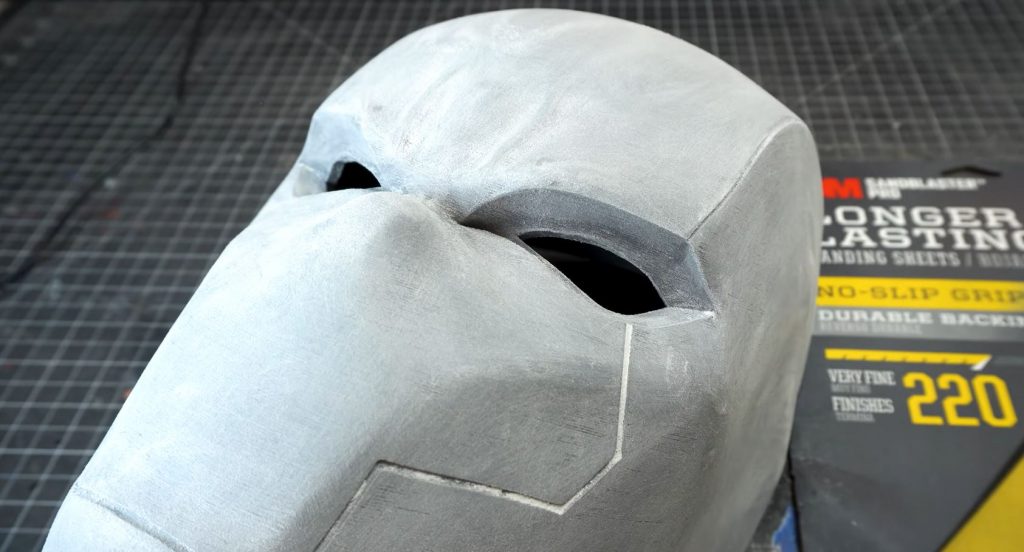
- Sanding: Sanding is the easiest and most cost-effective way to get a smooth surface. However, it can be time-consuming and inconvenient if you have a complex print. To sand your print, you start with sandpaper of 200 grit and work up to 3,000 grit for a smooth surface.
- Polishing: You can polish your print after sanding for a nice.. well, polish! This requires liquid polish and a cotton bud. You just apply the polish in even circular motions until you have a nice and shiny finish.
- Priming: This is an alternative to sanding. You spray your 3D printed part with primer spray and then sand down the residual primer afterward. Primer is easier to sand than PLA, and the results look much more refined. However, this is the most time-consuming process for smoothing surfaces!
What is the Strongest PLA filament?
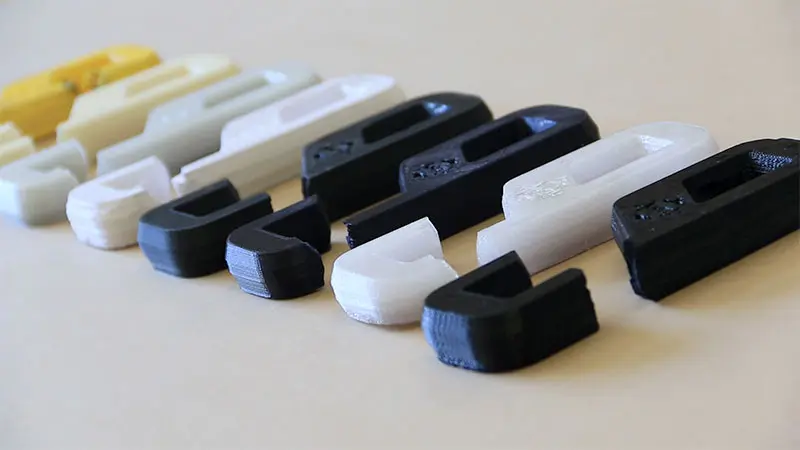
If you need strong prints, you have a few options available. Polymaker Polymax, eSun PLA PRO (PLA+), and Protopasta are all strong filaments to varying degrees. Any of them will probably serve you well.
Just keep in mind that PLA isn’t a particularly strong material just by its nature. Even the strongest PLA parts can crack fairly easily under impact or pressure.
Why is PLA Not Sticking to the Bed?
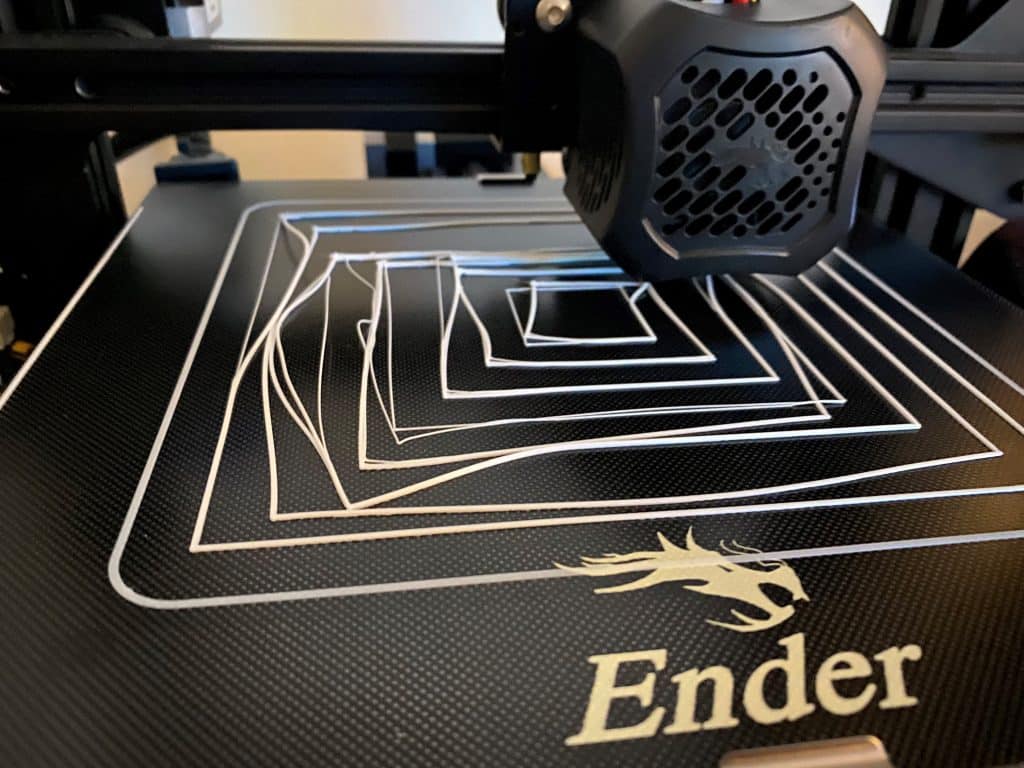
The first PLA print layer might detach from the bed for any number of reasons. We’ve listed here the most common reasons PLA may not stick to the build plate:
- Poorly leveled bed: An unevenly leveled bed might be the most common cause of detaching layers. The fix is simple — just level the bed!
- Wrong printing temperature: If the print head is too cold or hot, it can negatively affect layer adhesion. Check your filament’s packaging for the recommended printing temperatures.
- Wrong print speed: An incorrect print speed can detach layers. In general, we recommend printing PLA at 60-90mm/s.
- Print plate material: PLA can have adhesion issues with aluminum or glass plates. Try adding some glue or masking tape on the bed to help your prints stick.
- Low-quality filament: If you print with crappy filament, you’ll probably see a lot of issues. Consider swapping to better filament, like any of the ones we’ve listed here.
Is PLA Food Safe?
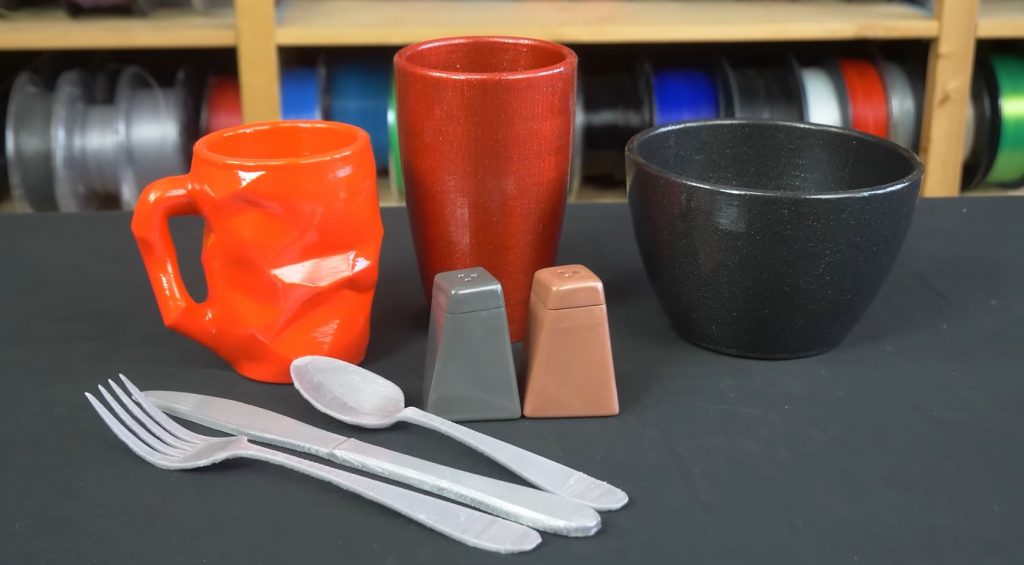
Here’s the surprising thing — PLA in and of itself is completely food-safe as it contains no toxic chemicals. However, any additives or coloring dyes that manufacturers add to their PLA can be unsafe for food-related usage.
Also, your 3D printer hot end material can also determine whether the resulting print is food-safe. Some hot end setups include lead, which is toxic.
Additionally, PLA is porous so it can trap food particles that can begin rotting and contaminate the material. The recommended method is to apply a food-safe coating to 3D printed items.
Is PLA Toxic?
As mentioned previously, PLA is a non-toxic polymer. However, it can release toxic fumes when burned at higher temperatures. This is why we emphasize opening a window or printing in well-ventilated spaces.
Is PLA Biodegradable?
In its natural form, PLA takes a long time to decompose. Some manufacturers may add materials that hasten the process, which could result in less waste — but most PLA end up in landfills as its natural biodegradation process takes way too long to be meaningful.
Is PLA Safe for Fish?
PLA is in general safe for fish, so you can use it to print decorations for your aquarium. That said, PLA will quickly degrade in water and your prints will likely fall apart within a few months. If you want to print aquarium decorations with PLA, seal the prints with an aquarium-safe epoxy before dropping.
Is PLA Waterproof?
PLA is waterproof, in the sense that it’s not so porous that it would let water run through. But as we just said, it will absorb water and degrade fairly quickly. Seal your prints if you want to put them in contact with water.
PLA Vs. ABS
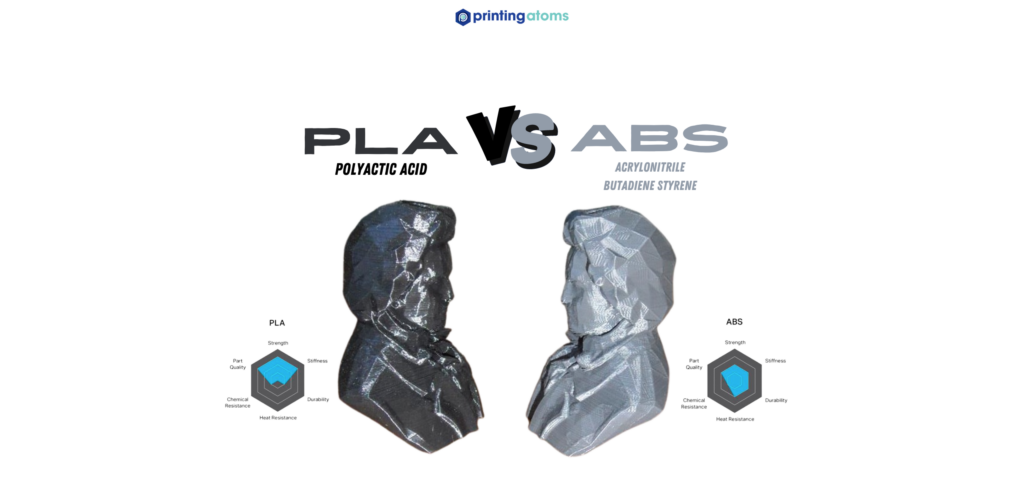
PLA is easier to print than ABS, as it requires lower printing temperatures. It’s also less prone to warping during printing, so printing errors aren’t as common with PLA.
PLA is stiffer and more rigid, so PLA-printed parts will hold better under constant pressure. PLA parts often look prettier with their shiny finish.
ABS, while not as stiff, is generally more durable than PLA. That little bit of flex that it has gives ABS superior impact resistance. It’s also (slightly) more heat-resistant than PLA.
ABS is also lighter than PLA, which can make it more practical. Last but not least, ABS filament is often cheaper than PLA.
PLA Vs. PETG
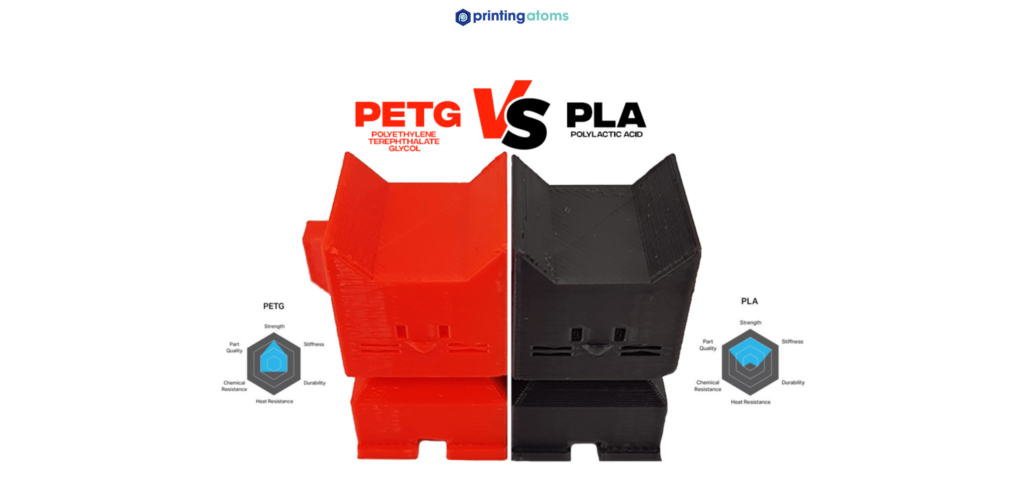
Just like with ABS, PLA is easier to print than PETG. It requires lower printing and bed temperatures, making it more suitable for beginners.
PLA is also cheaper than PETG and there are much more options available when picking your filaments. There’s also something to be said about PLA being more environmentally friendly than PETG.
PETG, however, trounces PLA in durability. PETG is far stronger and more flexible than PLA. It can withstand both stresses and impacts much better. PETG also resists heat, water, and chemicals.
And although PLA is easier, PETG isn’t exactly hard to print with, either. It hits a kind of a sweet spot between PLA and ABS, offering a lot of strength and (relatively) simple printing.
So Which PLA Filament is the Best?
All of the PLA brands that we reviewed in the article are of the highest quality. So if you want the best PLA filament, you can be sure that all the products we have reviewed are top notch.
However, If we had to give one recommendation, we would no doubt suggest the Hatchbox PLA. The filament is affordable, with the prints being vibrant-looking and strong. You just cannot go wrong with this brand.
Now if you just want the toughest PLA 3D printer filament on the market, you will love Polymaker’s Polymax PLA filament.
And finally, get the Sunlu PLA if you want the most aesthetically pleasing prints from your 3D printer.




